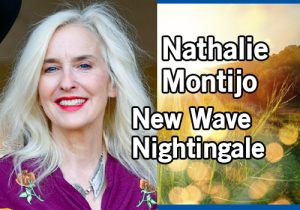Calculate your exercise target zone, then get out there and make it happen
 CONTRA COSTA COUNTY, CA (Mar. 24, 2023) — For most people, the word “exercise” carries an emotional impact.
CONTRA COSTA COUNTY, CA (Mar. 24, 2023) — For most people, the word “exercise” carries an emotional impact.
The range of responses to the idea of exercise – from sheer pleasure to abject misery – is an interesting study in contrast, but I want to aim for the majority of Americans who fall somewhere in between.
While it is universally accepted that some amount of exercise is good for just about everyone, the trick becomes finding the right fit … to be fit. The Department of Health and Human Services provides some basic guidelines as a jumping off point, which amounts to moderate aerobic activity such as brisk walking or noncompetitive swimming for 150 minutes per week or 75 minutes of vigorous aerobic activity such as running or dancing (as if no one is watching).
This guideline, while helpful as a baseline, is not “one size fits all.” Each person has unique needs, tolerances and goals. It bears reminding that you should always consult a provider prior to beginning an exercise program, especially if exercise has not been a consistent routine.
To achieve maximum benefit, exercise intensity should be at least moderate with as much vigor as one can safely handle. The goal for most reasonably healthy adults is to raise the heart rate to the age-appropriate target zone. To determine that, I need to briefly drop into the math rabbit hole.
By the numbers
First subtract your age from 220 to arrive at the maximum number of times your heart should beat per minute during exercise – or your maximum heart rate. Then find your resting heart rate by counting how many times your heart beats per minute when you are at rest. This is best done at a very relaxed moment, such as first thing in the morning upon waking. It will generally fall between 60 and 100 beats per minute. Take your pulse with your index and/or middle fingers on the thumb side of your wrist but do not use your opposite thumb. It may take a minute to find the pulse, but rest assured it is there.
When you have that number, calculate your heart rate reserve (HRR) by subtracting your resting heart rate from your maximum heart rate. Next multiply your HRR by 0.7 (70%) and add your resting heart rate to this number. Then multiply your HRR by 0.85 (85%) and add your resting heart rate to this number as well. The difference between these last two numbers is the target zone.
If your heart rate is above the target zone and you are not an elite athlete with a coaching staff, it is wise to reduce the intensity. If your heart rate is not entering the target zone during exercise, consider increasing the intensity.
Maintaining a commitment to regular (best daily) exercise may be daunting to busy, overextended Americans. It is, however, an investment that will pay off over time.
Move it or lose it
The phrase “move it or lose it” is more than just an aphorism – it is a fact. Having spent a considerable amount of my career in acute and post-acute care settings working with debilitated, sick patients, I can state without hesitation that the more fit and limber an individual presents going to the hospital (for any reason), the better the outcome tends to be.
Of course, the chief benefits of exercise are to maintain and improve the quality of life, but staving off illness, dementia and depression are wonderful side benefits.
In the East Bay, we are gifted with breathtaking landscapes and proximity to incredible beaches for hiking. The trick is finding fun and fulfilling activities that raise the heart rate, then carving out time and making them a priority.
Please send comments and question to newwavenightingale@gmail.com.

Nathalie Montijo
Nathalie Raven Archangel-Montijo holds a rather interesting array of degrees and certifications, including master’s in nursing and traditional Chinese medicine (TCM). She has post-master certification as an adult geriatric primary care nurse practitioner (AGPCNP) and a license to practice acupuncture in California (L.Ac). To round all that out, she is certified in infection prevention and control (CIC) and as an advanced certified Hospice and palliative care nurse (ACHPN).
She also performs in the outlaw country band, Nineteen Hand Horse.
